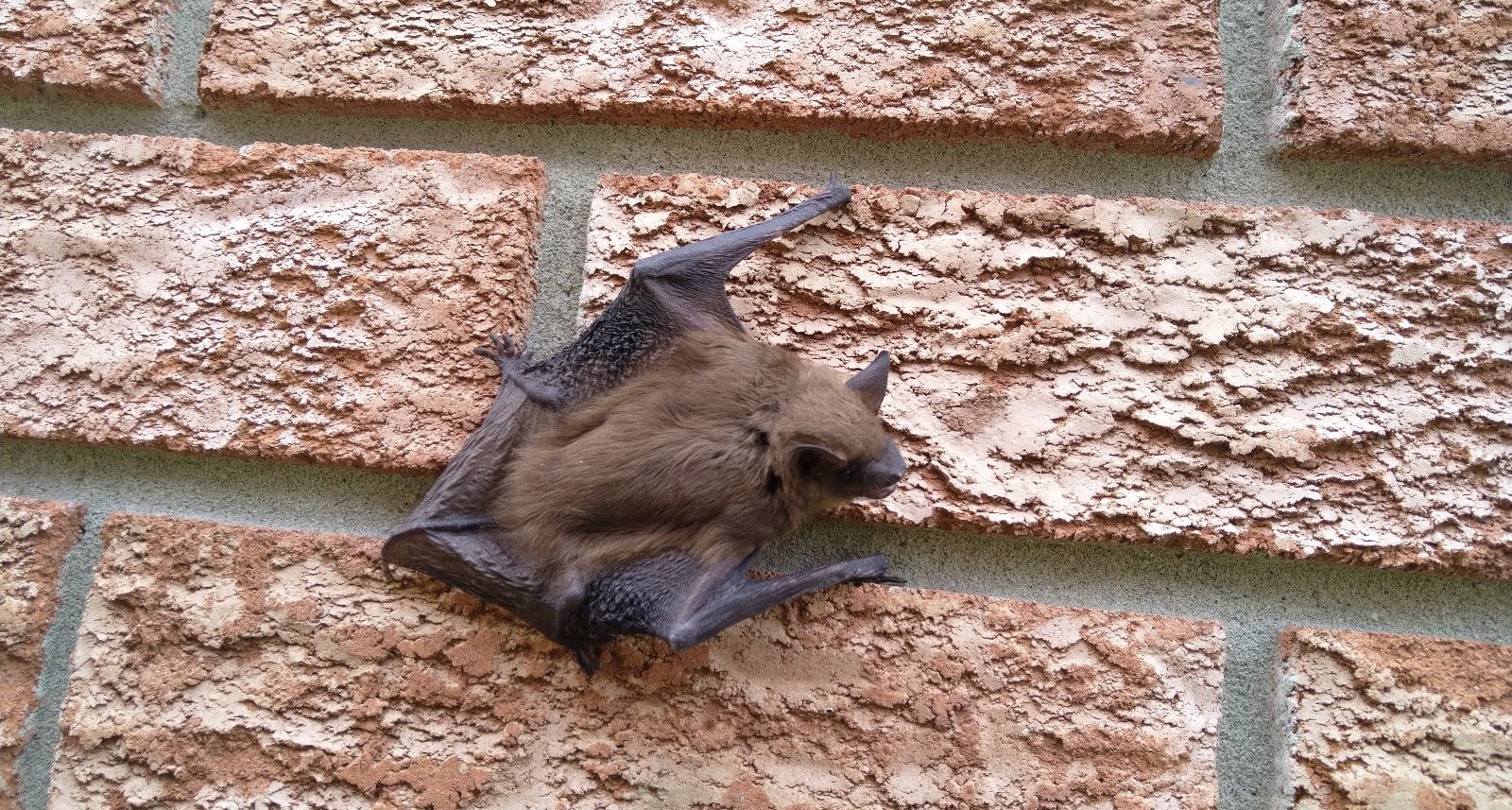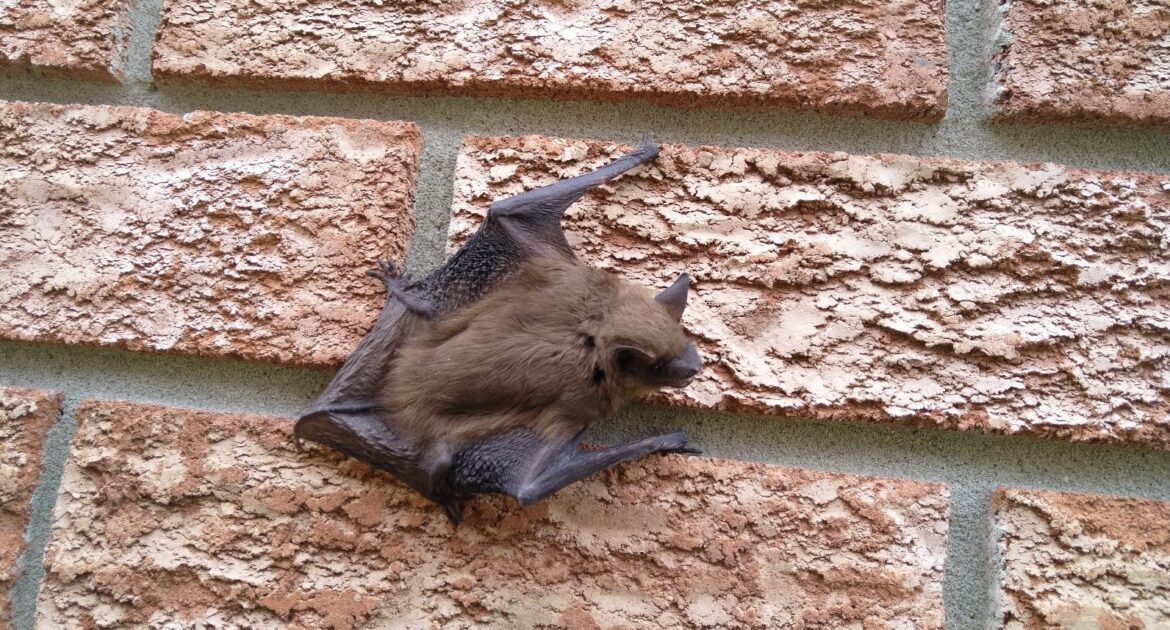Ohio’s northern long-eared bat used to be a common sight across the state. But now, this special animal is at risk of disappearing for good. What’s causing this? A terrible disease called white-nose syndrome is to blame.
This disease is caused by a fungus called Pseudogymnoascus destructans that has been killing bats across the country. Northern long-eared bat extinction is real, and it’s one of the hardest hit. They are especially vulnerable because of where and how they live.
The fungus thrives in cold, damp caves and mines where the bats hibernate every winter. It irritates and wakes the bats from their deep rest, draining their energy reserves. Many bats lose the fat they need to survive the cold months, and unfortunately, they often die. Here in Ohio, nearly 95% of their population has disappeared. Some groups of bats, called colonies, are completely gone.
At Skedaddle Humane Wildlife Control in Ohio, we support efforts to save these bats. At the same time, we help keep your home safe. Learning about this fungus affecting bats in Ohio and why bat conservation in Ohio is so important can help save these amazing creatures before it’s too late.
A Rare Encounter in Scioto County
On April 7, 2024, a small group of nature lovers took a trip to western Scioto County. While walking near a stream, they spotted a bat flying nearby. At first, they thought it was an eastern red bat, which is fairly common. But when the bat came closer, they noticed its unusually large ears.
Photographers in the group managed to snap some pictures before the bat flew off and clung to some tree bark. An expert later confirmed that it was a northern long-eared bat, one of the rarest types in Ohio today.
This brief sighting was a reminder of how fragile the northern long-eared bat’s future is. Once abundant, this species is now incredibly rare due to the rapid spread of white-nose syndrome. Without a cure or more efforts to fight this fungus affecting bats in Ohio, sightings like this could one day disappear forever.
What is White-Nose Syndrome?
White-nose syndrome is one of the biggest problems for bats in North America. The fungal disease grows on the skin of hibernating bats, particularly around their nose, ears, and wings. It looks like white, powdery spots, and while this might seem harmless, it’s deadly.
Here’s how it harms species like the northern long-eared bat:
- Interrupts Hibernation: The fungus causes itchiness and irritation, waking bats up during hibernation. Instead of conserving energy, they burn through the fat they need to survive.
- Causes Dehydration: Bats lose water as they wake up more often, but they can’t replace it during hibernation.
- Leads to Starvation: Without enough energy or water, many bats die before winter ends.
This deadly disease thrives in the caves and mines where the northern long-eared bat hibernates. It spreads quickly and ruthlessly affects these bats, making them one of the most endangered species today.
Why Are Northern Long-Eared Bats Important?
Bats are vital to the balance of nature. Northern long-eared bats eat thousands of pesky insects every night, including mosquitoes and moths that destroy crops. By keeping insect populations in check, they protect Ohio’s farmers and reduce the need for harmful pesticides.
If we lose these bats, it could lead to more bugs and bigger problems for our environment and agriculture. Bat conservation in Ohio is about more than saving a species. It’s about keeping the environment safe and healthy for all of us.
Why Are Ohio’s Bats at Greater Risk?
Some bats can survive despite this fungus, but Ohio’s northern long-eared species face extra challenges. Here’s why they are at such high risk:
- Perfect Fungus Conditions: Ohio’s caves and mines are damp and cool, creating the perfect conditions for the fungus to grow. Since northern long-eared bats hibernate for months in these caves, they are constantly exposed. This makes it incredibly hard for them to escape infection.
- Hibernation in Clusters: Northern long-eared bats hibernate together in tight groups to stay warm. While this helps them survive cold winters, it also makes it easy for the fungus to spread from one infected bat to all the others. Clustering that once helped these animals survive cold winters now puts them in danger.
- Staying Close to Home: Unlike migratory bats that fly miles away, northern long-eared species stick to one limited range. This means that if the fungus breaks out in one area, the local population can be wiped out quickly. With no ability to “move away” from the outbreak, they are suffering huge losses in Ohio.
Bat Conservation in Ohio
To fight the northern long-eared bat extinction, conservation in Ohio includes efforts like protecting habitats and raising awareness. Here’s what’s being done:
- Protecting Hibernation Sites: By limiting human access to caves and mines during hibernation, the spread of the fungus can be slowed. People unknowingly carry this fungus on their clothes and gear, so keeping humans out reduces risks.
- Research for Solutions: Scientists are working to create treatments that could either cure or prevent white-nose syndrome. This research is ongoing, and while progress is being made, solutions may still take time.
- Public Education Efforts: Teaching communities about why bats are important and how to protect them is key. With more people understanding how critical they are to Ohio’s environment, conservation efforts can gain more support.
What Can You Do to Help?
If you live in Ohio, there are a few simple things you can do to support northern long-eared bats and conservation in Ohio:
- Stay Away from Caves and Mines: Avoid visiting caves and mines, especially during hibernation season. This reduces the chances of spreading the fungus further.
- Put Up a Bat Box: Bat boxes offer a safe, cozy place for them to live, especially if they’ve been forced out of their natural homes.
- Cut Down on Pesticide Use: Many bats rely on insects for food, and overusing pesticides depletes their food source. Reducing pesticide use helps bats stay fed.
How Skedaddle Helps with Removal
At Skedaddle, we provide humane wildlife removal services that keep both your family and the bats safe. Our experts use one-way doors that allow them to leave your home but prevent them from coming back inside. Unlike DIY methods, our approach is safe, effective, and stress-free for the bats.
Protecting bats doesn’t mean you have to live with them in your attic. We’ll make sure your home is bat-free while protecting these endangered animals from harm.
We Can Save Ohio’s Bats
Northern long-eared bats are in big trouble, and they need our help. White-nose syndrome has pushed them to the brink of extinction, with 95% of their population already gone. By supporting bat conservation in Ohio, you can help give these bats a fighting chance for survival.
If you have bats on your property and want them removed humanely, Skedaddle Humane Wildlife Control in Ohio is here to help. Contact us today to request an estimate and learn how we can safely protect your home while making a difference for northern long-eared bats. Together, we can keep Ohio’s wildlife thriving.




